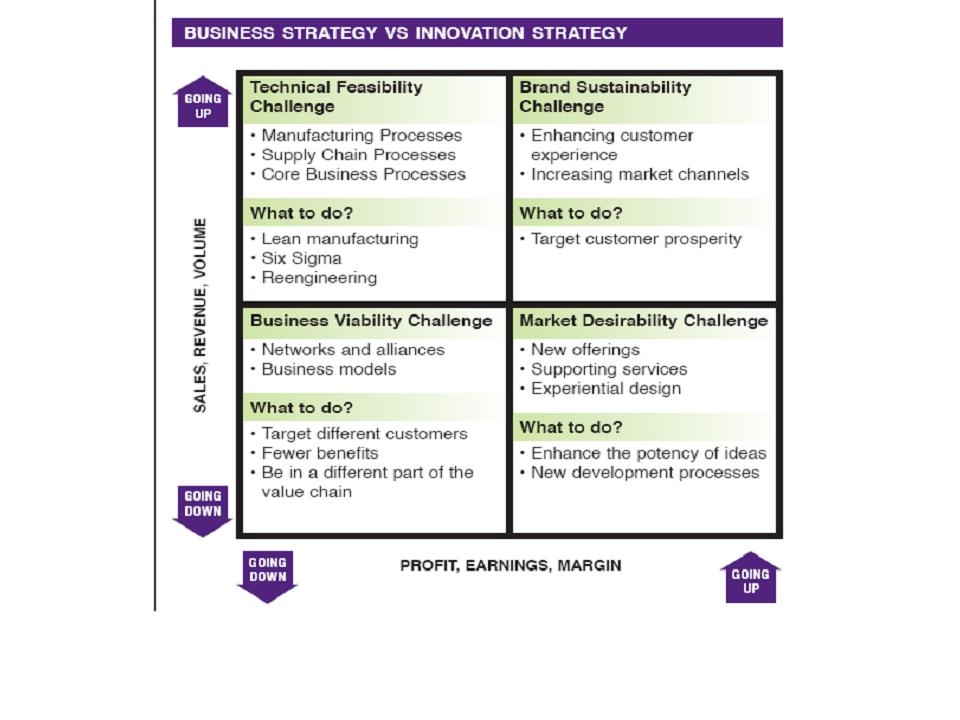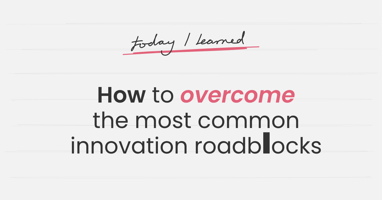Survey after survey from McKinsey, The Conference Board, Boston Consulting and others points out that innovation is top of mind for many companies today. Innovation is tagged as a core driver for creating competitive advantage and growth. Executives may ask, are we innovative? However, the more important initial question is whether we are innovating to solve our business issues, to achieve our goals, and to meet our financial expectations. Sometimes overlooked is that responding to this type of question requires critical innovation leadership at every level in a company.
The question of whether we are innovating to solve our business issues is a most difficult question to answer. The responsibility for ensuring that the innovation system can sustain the flow of innovation throughout the company, creating competitive advantage and growth, is shared by executives, business leaders, project leaders and team members. In addition, leaders at every level are challenged to:
- Align the innovation and business strategies
- Oversee the portfolio of the total innovation effort, and
- Track progress against expectations.
Strategic Alignment
Senior executives continually struggle to maintain balance between two powerful forces in business, namely profits (earnings and margins) and sales revenue (market share and volume). A misalignment between business strategy and a company's innovation strategy can generate powerful bottlenecks that constrict the flow of innovation within a company. The two-by-two matrix below is useful to examine specific innovation alignment challenges. In addition, the matrix offers some suggestions how to address these challenges.

First, let us look at Technical Feasibility (upper left quadrant). Companies experiencing challenges in this area have increases in sales revenue, volume, even market share but their profit, earnings, and/or margins are declining. For some reason, the innovation applied to manufacturing, supply chain, or other core business processes has failed to keep costs down. Well-known and powerful tools such as Six Sigma, Lean Manufacturing, re-reengineering, etc. can be utilized to solve this specific innovation leadership challenge. Senior executives must ensure that their company's innovation efforts, business needs, and supporting technology are in sync.
Market Desirability (lower right quadrant), happens when a company has low sales volume but high profitability, creating a serious innovation challenge. In this case, the flow of innovation has been insufficient to sustain market share or volume. Senior executives must insist on understanding the root cause of the bottleneck as prerequisite for addressing this innovation challenge. Often, companies interpret a challenge in this area as a need for more new products with enhanced features/benefits at higher margins for the most demanding customers. For example, by providing low margin check-cashing services to non-bank customers, the KeyBank of Cleveland was able to identify multiple businesses within the neighborhood which eventually became new business clients.
Brand Sustainability (upper right quadrant) happens when strong market share and enviable profitability come together to create one of the greatest innovation challenges: sustainable market differentiation. Sustaining a brand's leadership position over time requires a great amount of concentrated time and energy. Senior executives are continually challenged by the interrelationship between the company brand and product brands. An example of a sustainable brand is P&G's Febreze product. P&G has differentiated what is arguably a commodity product, not by selling more or better air freshener. Rather they provide “freshness” itself for the consumer, creating a brand experience that extends the life of the Febreze brand. It is the interrelationship between the corporate P&G brand and Febreze, the product brand, which creates sustainable innovation for the company over time.
Lastly, let's look at Business Viability (lower left quadrant). This is an instance of both declining sales revenue and profits. For a company, this is a total innovation challenge, and often leaves the senior innovation leadership team reflecting on what has changed. The company's systems are inherently broken. The company is left unable to deliver a high quantity of quality innovations to maintain its competitive position, thus putting the viability of the business at risk. Cargill's Ag Horizon was challenged in just this fashion, however the business revamped its product offerings, sales channels, and business systems, transforming its image from “just” a grain company to a business that partnered with farmers to help them prosper.
Certainly, real business is not as clear cut and simplistic as represented here. All organizations, large and small, will experience innovation challenges in the course of their lifetime. However, the responsibility to ensure that the company's innovation system is sufficient to not only address these challenges head-on but also to move the company to long-term success is shared from top to bottom. Strategic alignment requires leaders across the company to bring the innovation effort to bear on solving business issues. Innovation is a business system and serves the business by solving the various business bottlenecks.




